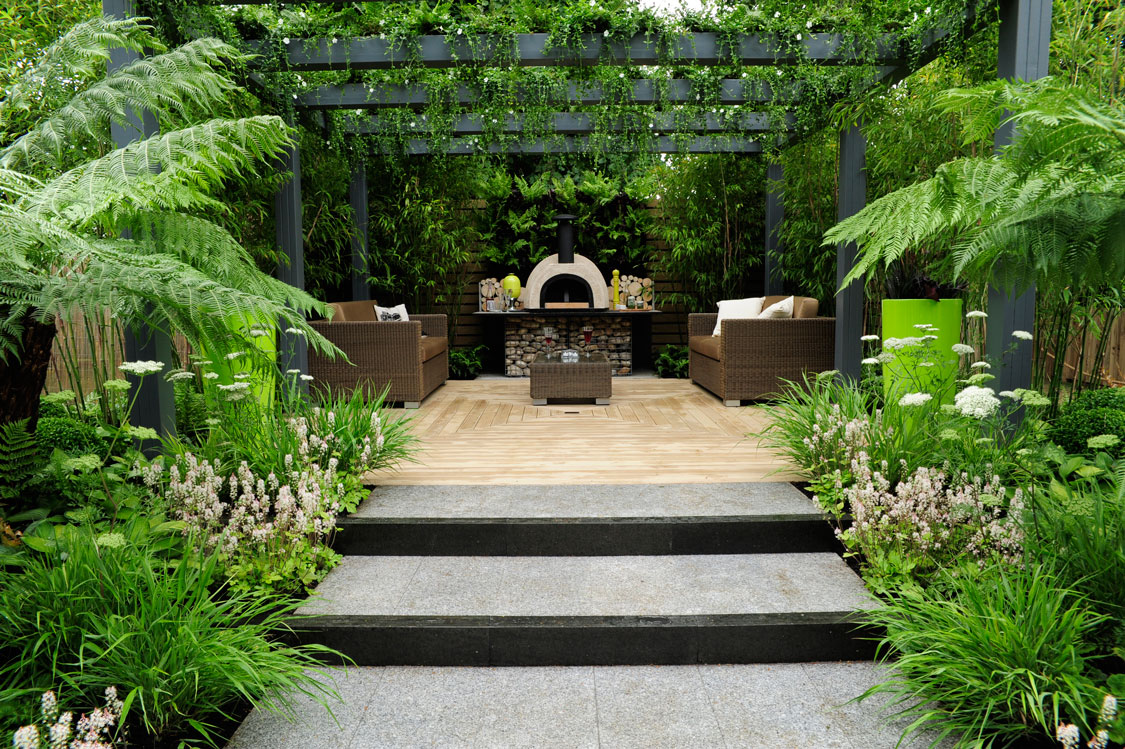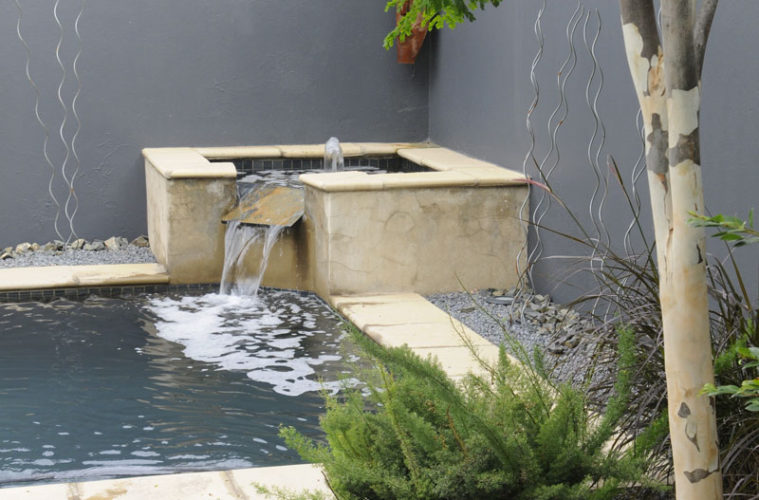Expert design tips on making the most of a small garden while keeping maintenance to a minimum
OPT FOR SIMPLE PLANTINGS
Follow these tips when choosing plants for a petite garden:
- Keep the colour palette simple and restrict your choice to a few species, repeating them rather than planting a huge variety of plants that can lack impact. “Choose plants suitable for your environment that will grow happily without too much TLC,” says Bryon Leppan of French Designer Gardens.
- Using a base of evergreen plants in various shades of green (like the ferns and arum lilies in this garden) works brilliantly to provide year-round interest.
- White flowering plants add elegance and grace to a planting scheme making the garden feel more spacious and will stand out in the evenings.
- For a more vibrant look, combine hot shades of pinks and purples to make your garden pop.
- As their scent is contained, fragrant plants are also ideal for small spaces.
- If you want the plants to be the focus then use sculptural specimens for added drama.
INCLUDE DOUBLE DUTY FEATURES
Compact gardens require nifty design features that work twice as hard to earn their keep. Look out for a mod ottoman that can be used as coffee table, but at the same time provides storage for your outdoor scatters; or consider creating a plunge pool that doubles as a water feature like this clever design. Not only does the pool provide a spot to cool off, the sound of the built-in fountain creates a tranquil air and has the added bonus of helping to drown out the noise of traffic.
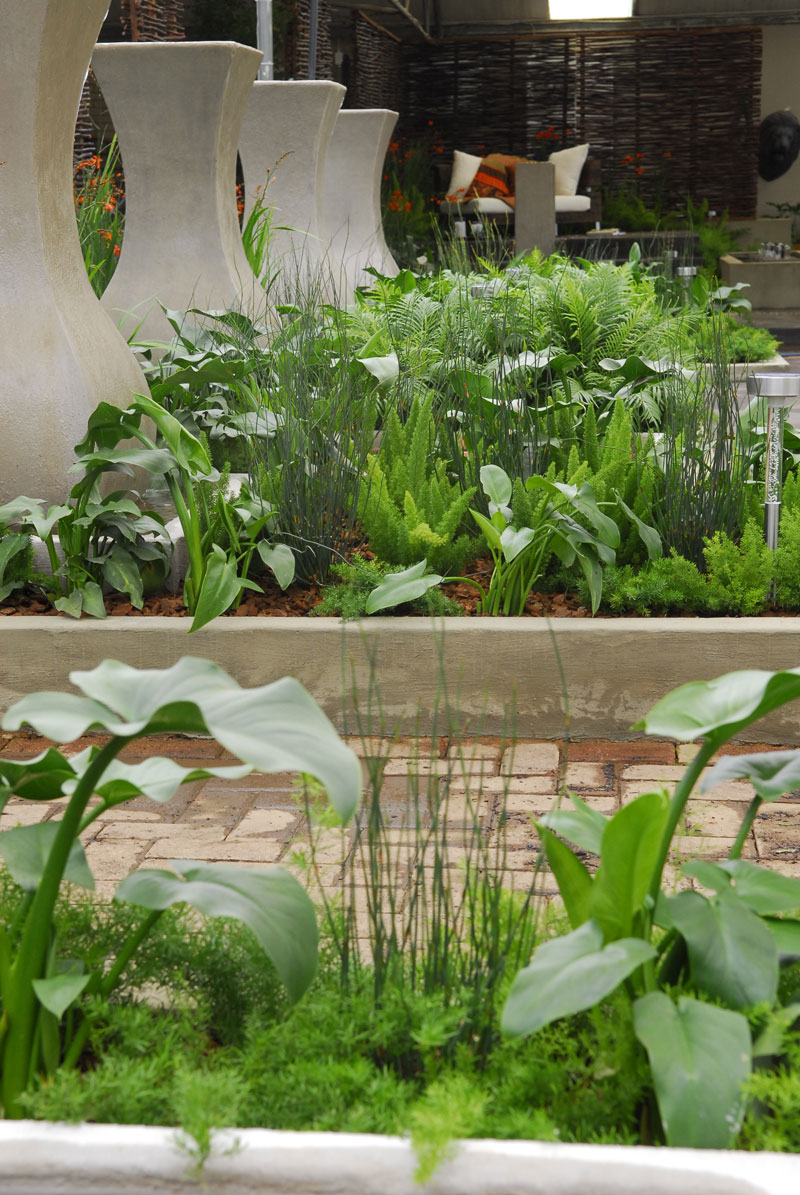
CREATE A VERTICAL GARDEN
While space may be limited on the ground, you can always go up. Small gardens are often enclosed by high walls or fences and these can be transformed into instant gardens. Seeing the boundaries all at once means that you are instantly aware of the size of the garden. Covering the walls, or at least a part of them, with plants creates the illusion that the garden extends further than it actually does.
Trendy vertical gardens can be created in a number of ways from complex built-in systems to DIY kits and even clever cut-outs as seen here in the ‘Embedded in Mother Earth’ garden designed by David Dorgan, Anne Cilliers and Byron Leppan for The Lifestyle Garden Design Show.
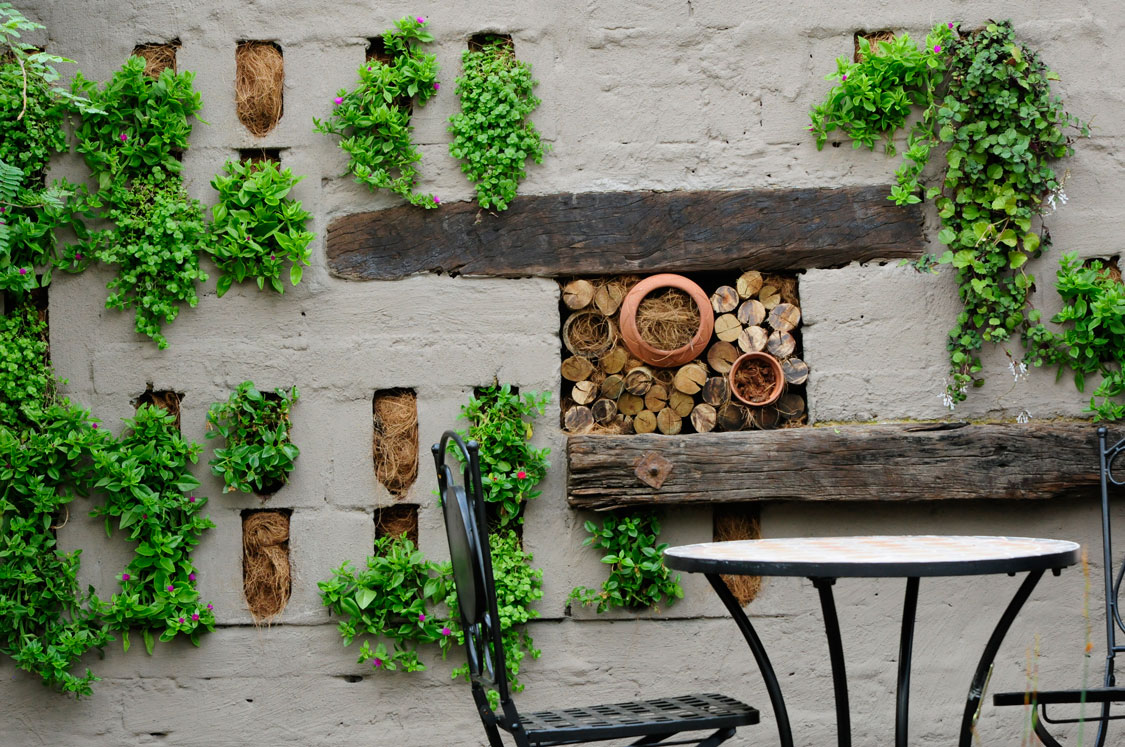
STICK TO A SINGLE STYLE
A tiny space needn’t be limiting; if anything, it’s as much about styling as it is about gardening. That’s why it’s important to have a clearly defined style in mind before you start building your garden. For instance, are you drawn to the clean lines of a mod, minimal look, or do you prefer more informal curves and abundant plantings like in this garden designed by Theresa Jonker and Ryan Goosen at The Lifestyle Garden Design Show? Browse through books, magazines and the Internet and make a mood board – you’ll soon see your personal style emerging.
TIP: Remember that choosing materials that match the interior of your house and carrying them through into your garden will make both your indoor and outdoor areas feel larger.
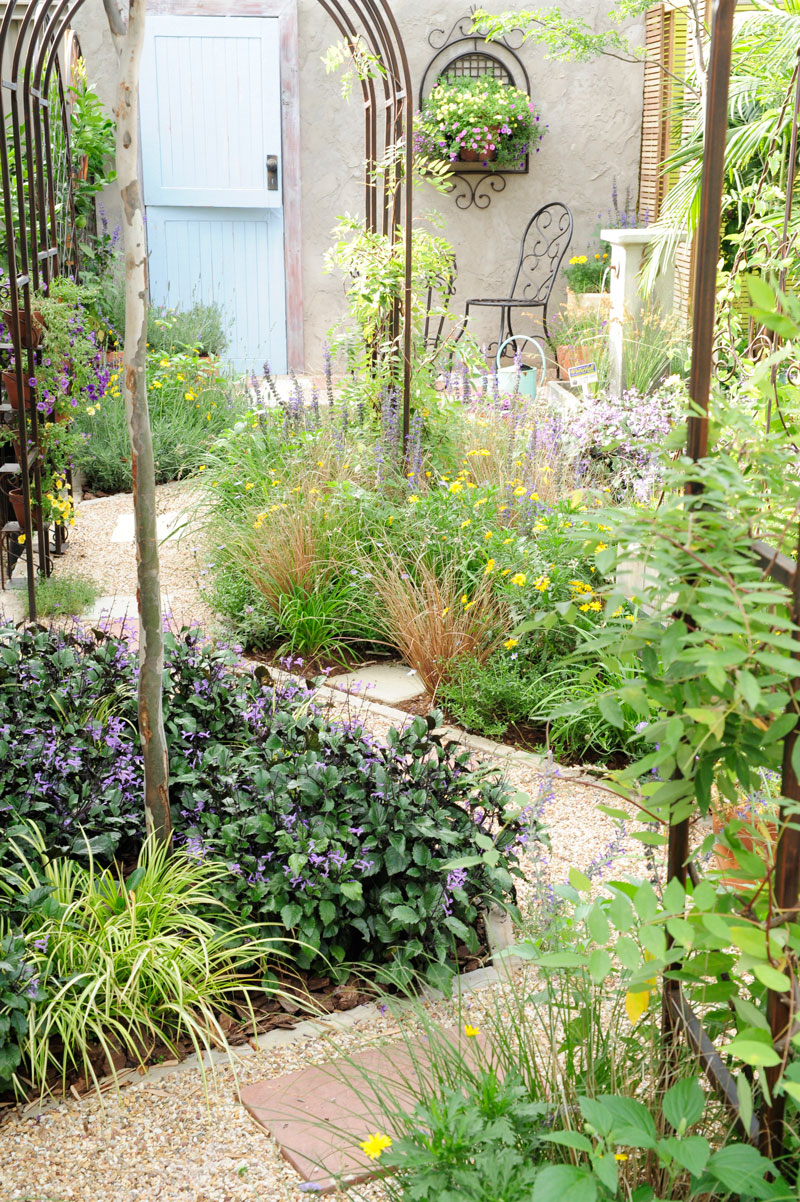
CREATE BUILT-IN SEATS
When creating raised features, such as beds or pools, include a wide ledge around the edge which can double up as extra seating. Take this idea one step further by using a raised bed as a backrest for a built-in seat, as has been done in this herb garden at Doonholm Nursery.
Another good idea to steal from this space is to use gravel rather than grass. “In a small garden I would generally suggest the removal of a lawn as this is always a high-maintenance element,” agrees landscaper Roger Smith of Quercus PLP.
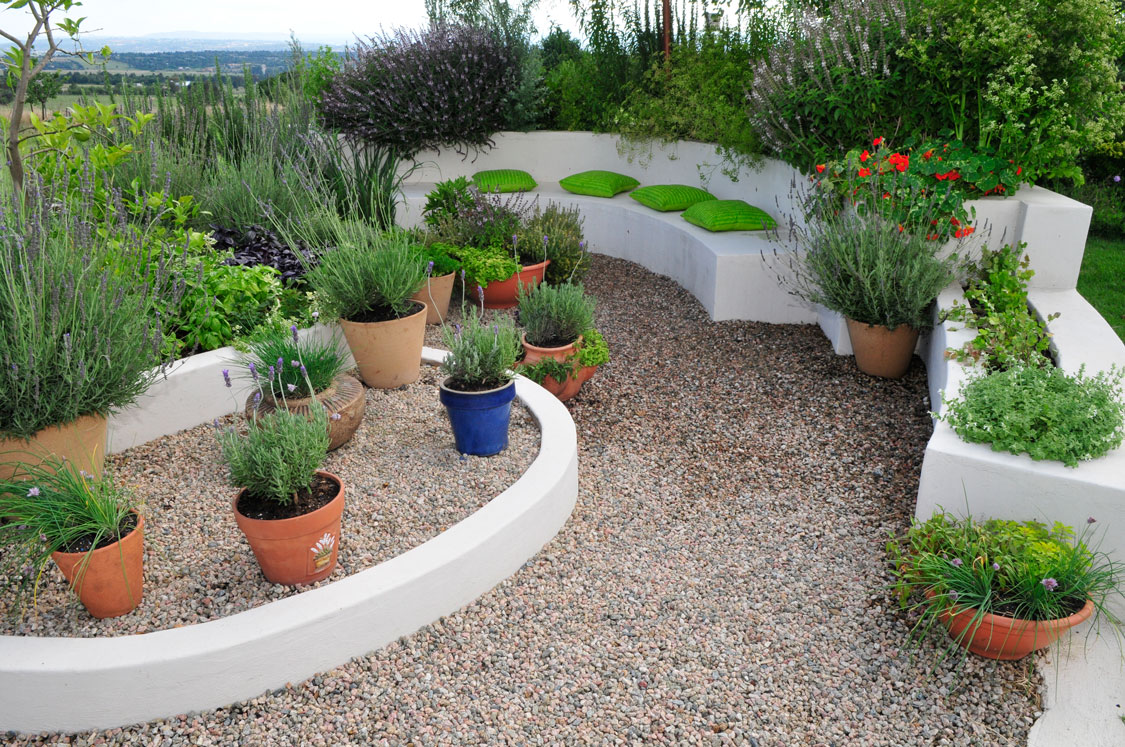
EXPERIMENT WITH DIFFERENT LEVELS
Creating different levels not only adds interest to a compact garden design, but can help give it a more spacious feel. It also presents an opportunity for you to experiment with different materials and plants, as can be seen in this sunken garden at the Hampton Court Palace Flower Show, where the clean lines of the retaining walls have be softened with naturalistic plantings.
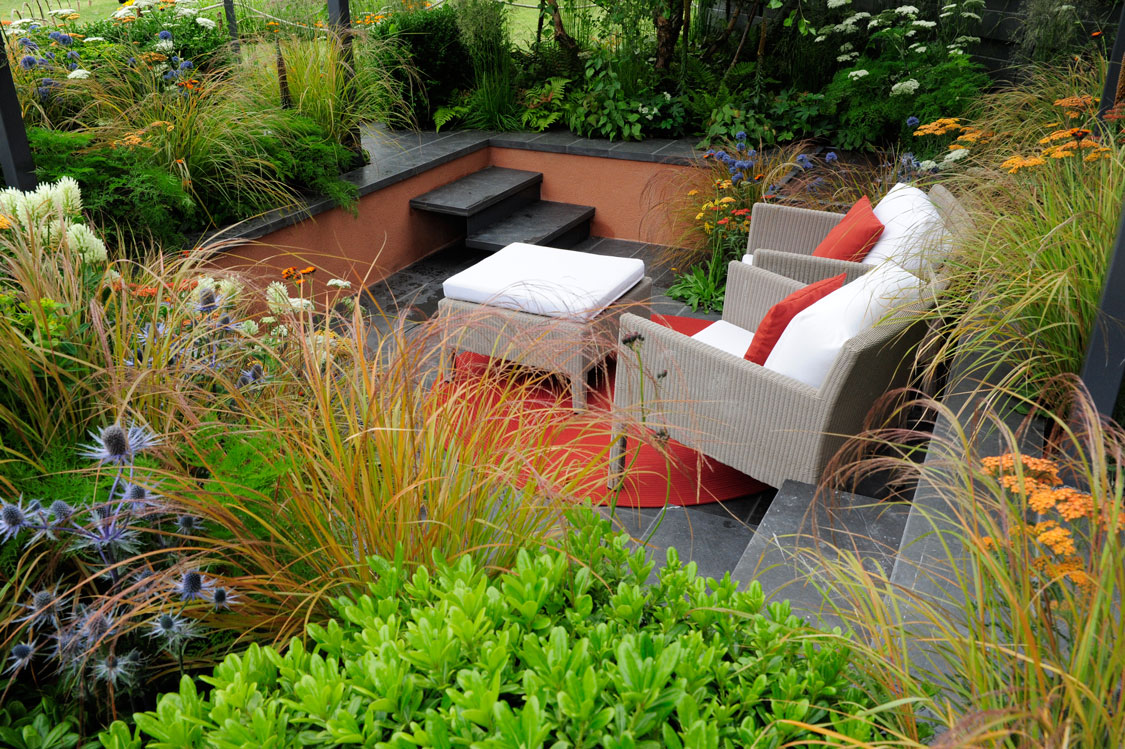
GET THE PROPORTIONS RIGHT
“A small space needs careful planning; the essential features I would include are seating, scented plants and water. Keep everything in proportion and retain the balance between the hard landscaping and plant material as much as possible,” says Raine Clarke-Wills of Raine Garden Design, who designed this garden at the Hampton Court Palace Flower Show.
“Proportion also comes into play when choosing your plants. For small gardens, opt for smaller leafed plants as large leaves will make your garden look more compact,” adds Leon Kluge of Leon Kluge Garden Design.
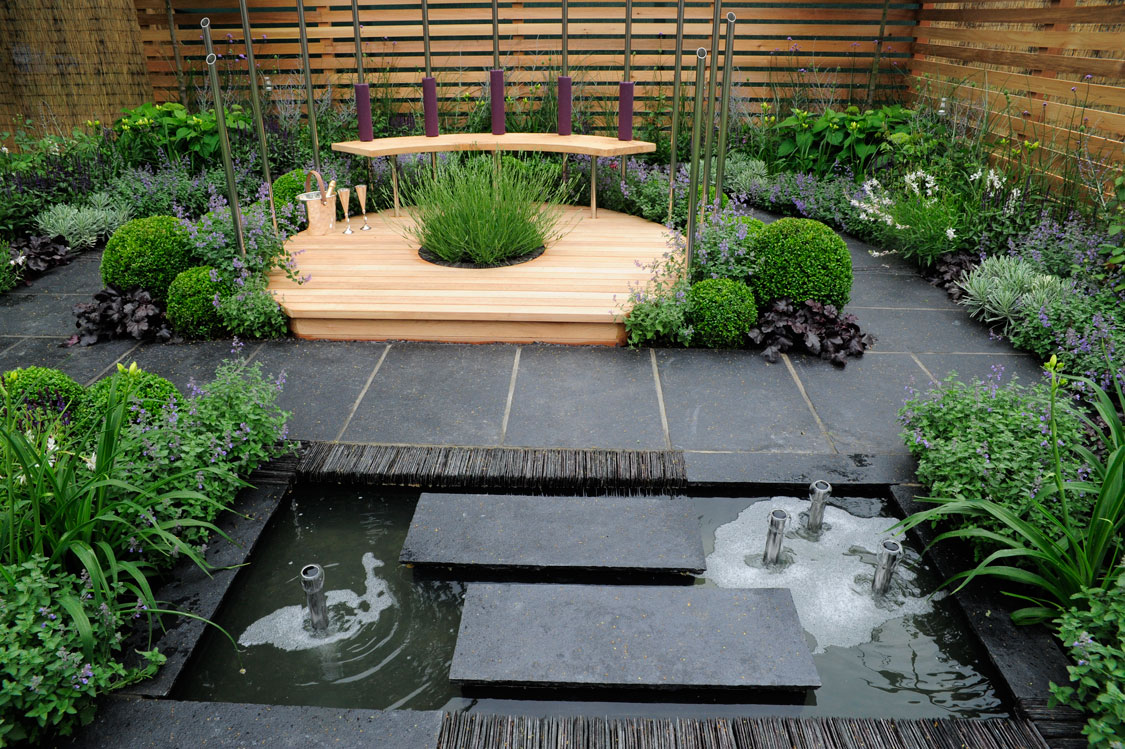
CONSIDER AN UNCONVENTIONAL LAYOUT
Consider turning a conventional layout around completely and positioning the main seating area at the back of the garden; this draws the eye outwards enhancing the sense of space. “In a small space, over-complicated designs look fussy; a simple layout has a stronger effect,” says Roger Smith of Quercus PLP, who designed this UK garden.
He’s used generous blocks of hard and soft landscaping to divide and organise the space, both for interest and ease of maintenance, creating a stylish, uncluttered garden for relaxing and entertaining.
